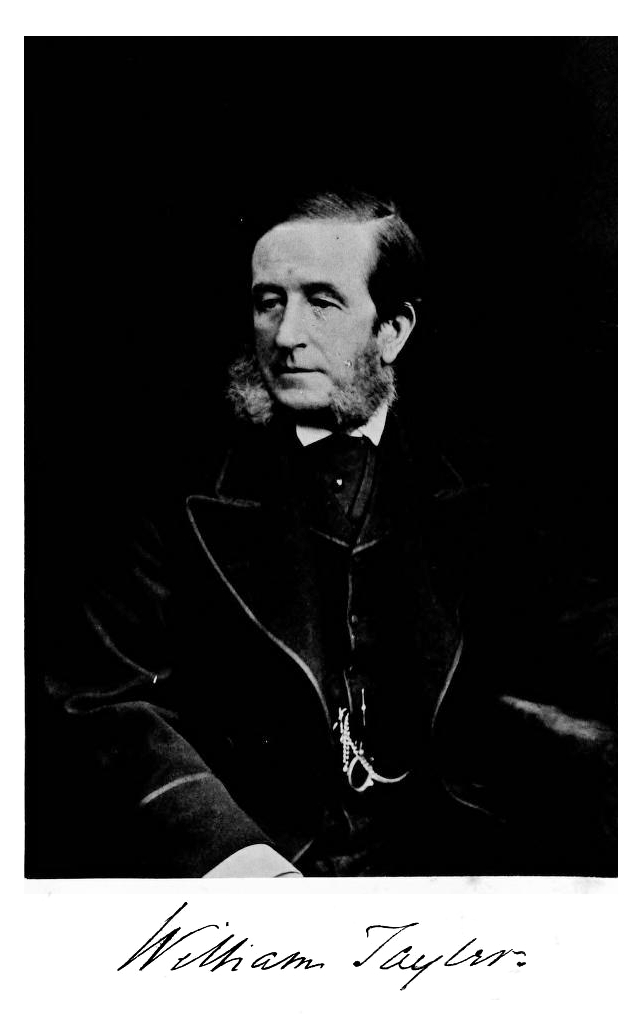William Tayler on:
[Wikipedia]
[Google]
[Amazon]
 William Tayler (1808–1892) was a civil servant of the
William Tayler (1808–1892) was a civil servant of the
 William Tayler (1808–1892) was a civil servant of the
William Tayler (1808–1892) was a civil servant of the East India Company
The East India Company (EIC) was an English, and later British, joint-stock company founded in 1600 and dissolved in 1874. It was formed to trade in the Indian Ocean region, initially with the East Indies (the Indian subcontinent and Southea ...
who lived in India
India, officially the Republic of India (Hindi: ), is a country in South Asia. It is the seventh-largest country by area, the second-most populous country, and the most populous democracy in the world. Bounded by the Indian Ocean on the so ...
from 1829 until 1867. He became commissioner of Patna
Patna (
), historically known as Pataliputra, is the capital and largest city of the state of Bihar in India. According to the United Nations, as of 2018, Patna had a population of 2.35 million, making it the 19th largest city in India. ...
in 1855 and in 1857 was involved in the suppression of the 1857 Sepoy Mutiny. His measures against the local people were regarded as excessively harsh by his superiors, and he was suspended and given an appointment of lower rank.
Work
An amateur artist, Tayler sketched and paintedlandscapes
A landscape is the visible features of an area of Terrestrial ecoregion, land, its landforms, and how they integrate with Nature, natural or man-made features, often considered in terms of their aesthetic appeal.''New Oxford American Dictionar ...
, scenes from everyday life, and the court, military, and daily dress of Indian
Indian or Indians may refer to:
Peoples South Asia
* Indian people, people of Indian nationality, or people who have an Indian ancestor
** Non-resident Indian, a citizen of India who has temporarily emigrated to another country
* South Asia ...
s from different walks of life. ''Sketches Illustrating the Manners and Customs of the Indians and Anglo Indians Drawn on Stone from the Original Drawings'' from ''Life'', published in London in 1842, included six of his drawings. In 1881 and 1882, Tayler published a two-volume autobiography, ''Thirty-Eight Years in India'', illustrated with 100 of his own drawings.
In a watercolor
Watercolor (American English) or watercolour (British English; see spelling differences), also ''aquarelle'' (; from Italian diminutive of Latin ''aqua'' "water"), is a painting method”Watercolor may be as old as art itself, going back to t ...
he portrayed the rajah of Burdwan
Bardhaman (, ) is a city and a municipality in the state of West Bengal, India. It is the headquarters of Purba Bardhaman district, having become a district capital during the period of British rule. Burdwan, an alternative name for the city, ...
, in West Bengal
West Bengal (, Bengali: ''Poshchim Bongo'', , abbr. WB) is a state in the eastern portion of India. It is situated along the Bay of Bengal, along with a population of over 91 million inhabitants within an area of . West Bengal is the fourt ...
. This was probably Mahtab Chand, who was born in 1820 and was rajah from 1832 until his death in 1879. He was regarded by the British as an enlightened and loyal ruler. The painting is part of the Anne S.K. Brown Military Collection at the Brown University Library.
References
{{DEFAULTSORT:Tayler, William 1808 births 1892 deaths British East India Company civil servants British people of the Indian Rebellion of 1857 19th-century English painters English male painters British landscape painters 19th-century English male artists